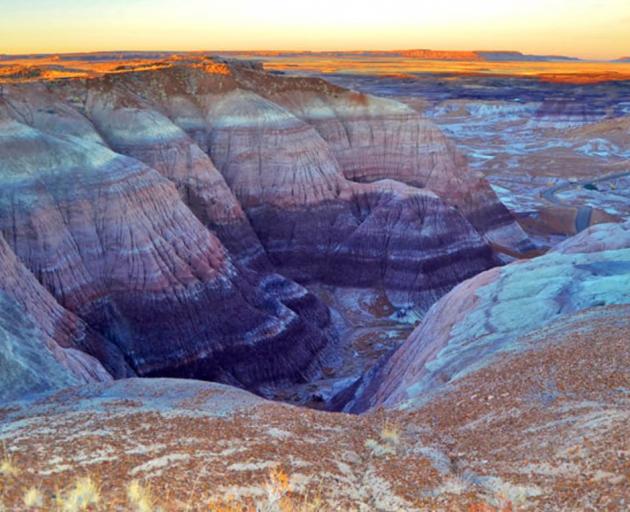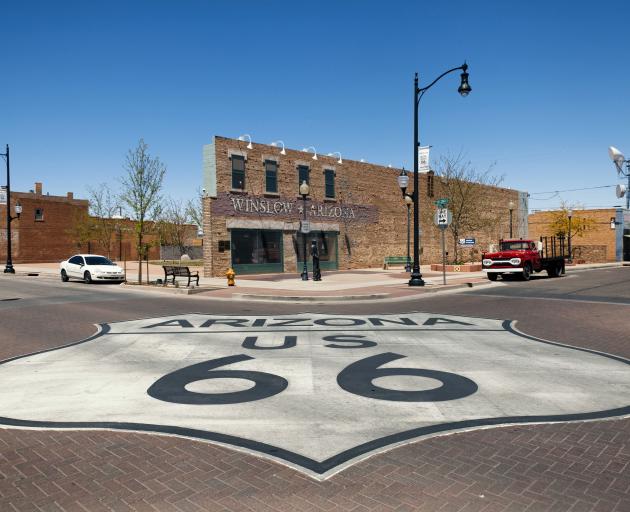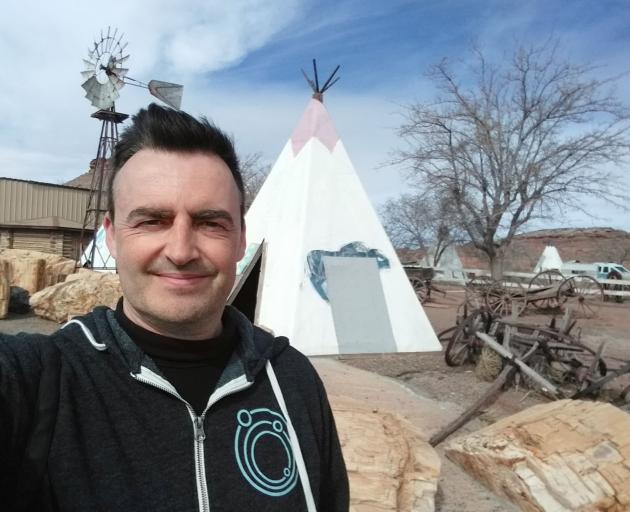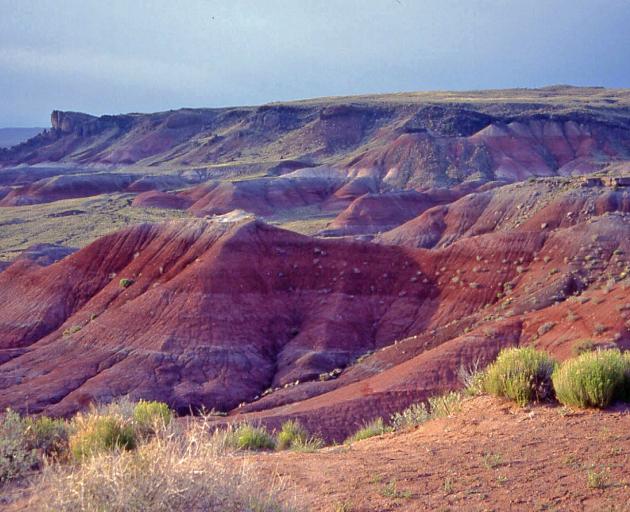
Last year, I ventured down America's Mother Road, Route 66.
The Illinois section of the storied highway is the oldest part of the route, with a wealth of roadside delights studding the traverse across the state. For a complete change of scenery, Arizona's Route 66 is another bumper chunk of the highway, tightly packed with time-honoured attractions and Americana curios.
Heading east from California, or down from Las Vegas, once you've crossed the state line into Arizona, there's a swag of flavourful Route 66 towns and skeleton towns, either side of the turn-off to the Grand Canyon's South Rim, on Interstate 40. Situated in the high grasslands of northern Arizona, one of the first is Seligman, beckoning you with a sign declaring the town as the "Birthplace of Historic Route 66".
Angel Delgadillo, the small-town barber, is credited with leading the preservation movement that brought Route 66 back from the dead, after it was officially decommissioned in 1985. The trail-blazing old road was literally expunged from the map, with all road signs removed. But Arizona was the state that saved Route 66 as an historic landmark, spanning the belly of the United States.

Today, the old highway has roared back into life as Historic Route 66, shadowing or submerged by the I-40, across Arizona.
Between the redrock mesas of New Mexico and the arid desert along the Colorado River, the high-speed freeway provides quick access to the best surviving stretches of the old road, so you can whiz through plenty in one day. For the extra-conscientious, there's actually 250 miles (400km) of drivable Route 66 in Arizona, including the longest unbroken stretch in existence. Unlike Illinois' tedious sprawl of cornfields, the natural terrain across Arizona is scenically blessed, as you cross stark badlands, cloud-swept plateaus and a desert painted in scandalous hues, safeguarding the vestiges of ancient civilisations.
Williams is a perennial favourite - and very familiar to travellers, as it is the gateway town into the Grand Canyon. It was also the last Route 66 town to be bypassed by the interstate and the main street still marinates in glorious neon. It's got the best souvenir shops, to boot.
Further up the road, call into Flagstaff, a sturdy town with classical stone buildings, intermixed with retro Route 66 diners, motels and hotels. It's an infectious railroad town to explore on foot, taking in some of the old-school venues such as the Downtowner Motel, which began life as a brothel.

The Route 66 town is also home to La Posada Hotel, the last of the great Santa Fe Railroad hotels to be built. Mary Colter's masterpiece of graceful design, has been exquisitely restored. Colter was the design diva behind many historic hotels in the American Southwest, including various Grand Canyon lodges, like El Tovar. This gloriously romantic, hacienda-style building was on the verge of demolition, but was saved by locals. Dine in the fantastic Turquoise Room.
Close to Winslow, don't miss the meteor crater site. Crashing to earth 50,000 years ago, at a speed of about 40,000kmh, the resulting crater is as deep as a 60-storey building and as wide as 20 rugby fields.

It's considered the best preserved meteor crater in the world, unravaged by the passage of time or nature's corrosive forces. Initially, it was believed to be an ancient volcanic crater, but geologists discovered it was caused by the impact of a meteorite, paving the way for more discoveries worldwide. Because of its lunar-like surface, Nasa actually used it when training Apollo astronauts for missions to the moon. Even though it's considered a pipsqueak compared to the meteor crater that would have been formed in Mexico 60million years ago, wiping out the dinosaurs, it's a gob-stopping sight.
Follow the signposts to the Petrified Forest. This is the only national park that Route 66 actually runs through, and if you like things fossilised, this is a forest for you. The forest hadn't been to a horror show; its name very much reflects the fact that massive ancient forests were buried under volcanic ash millions of years ago, before uplift and erosion exposed this strange mash-up of sparkly quartz logs. Like precious gems shining in the sun, remnants of a prehistoric forest lie at your feet. Colourful specimens, from small shards to humungous trunks are strewn across these Badlands, including a massive log that forms a natural bridge.

Built in 1920, this classic lodge was originally constructed in petrified wood before being renovated in Pueblo Revival style. Ponderosa Pine logs protrude from the adobe and stone walls, earth-toned stucco and flat roofs. It was renovated by Mary Jane Colter in 1947 and designated a national historic landmark, at the same time that Historic Route 66 was recognised. In its early days, many Route 66ers would stay a night in this princess-pretty lodge, but now it's preserved as a charming museum.
Speaking of accommodation, nearby Holbrook is home to the famous "Sleep in a Teepee" Wigwam Village Motel. Very kitschy, but a genuine Route 66 icon harking back to the 1950s.
Across the state line, in New Mexico, I headed to Gallup to stay a night at El Rancho Hotel.

A constellation of film legends have stayed while shooting in the desert, including Ronald Reagan, Kirk Douglas, John Wayne and Katherine Hepburn. Every room is named in honour of a movie legend who was a regular guest. Signed photos of the stars adorn the magnificent two-storey open lobby with its circular staircase, heavy beams, Navajo rugs and mounted trophy heads. I definitely recommend staying a night.
While you're there, dive into the trading post scene either side of the state line with New Mexico.
The area is responsible for 70% of the authentic Native American art sold internationally. Plus the nearby Window Rock is the capital of the Navajo Reservation.
I also popped in to the Chief Yellowhorse Trading Post. A proud Navajo Indian, Chief Yellowhorse ran the business from 1960 until his death 20 years ago, but the store is still managed by the Yellowhorse family ensuring that the spirit of the old road lives on.
Want to know more?
For more touring tips on Route 66, visit www.visittheusa.com












